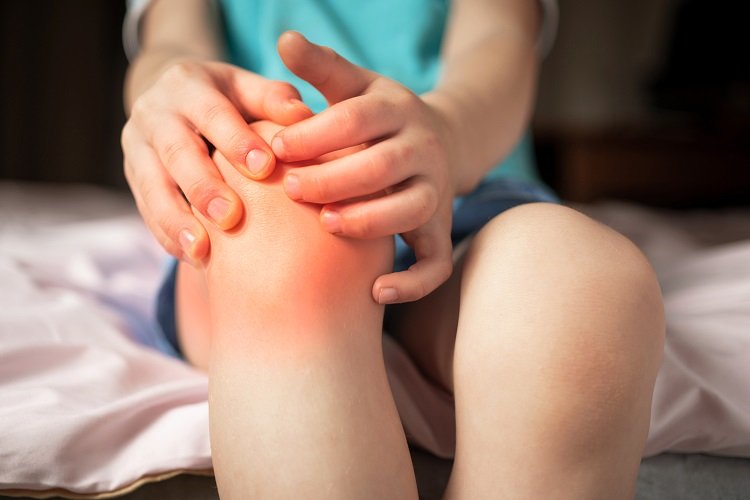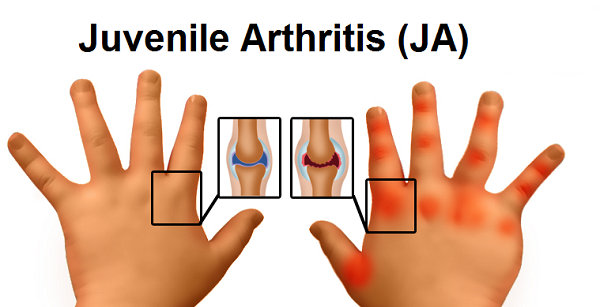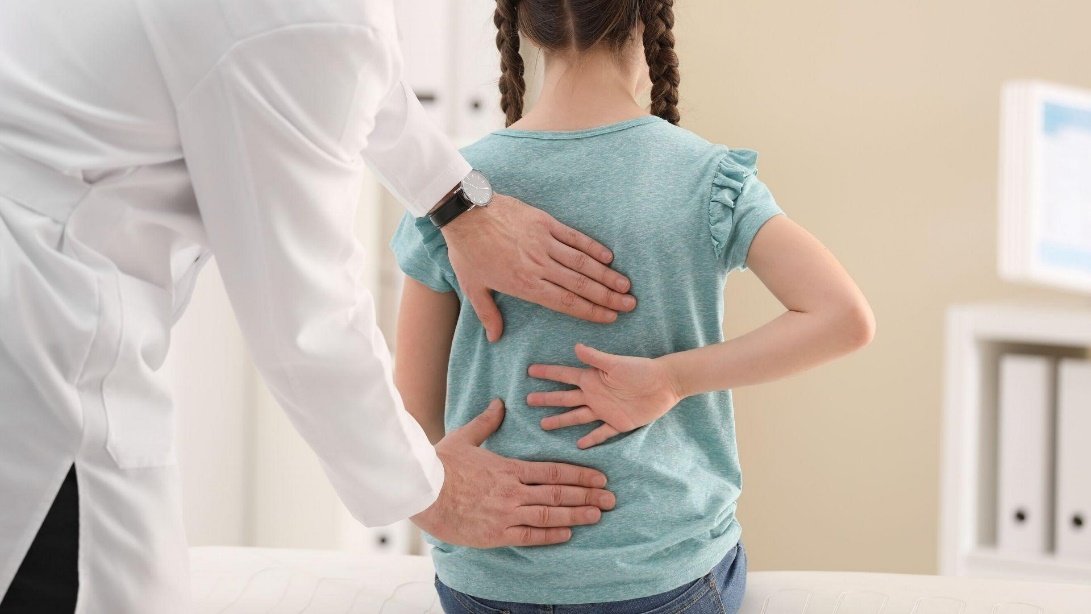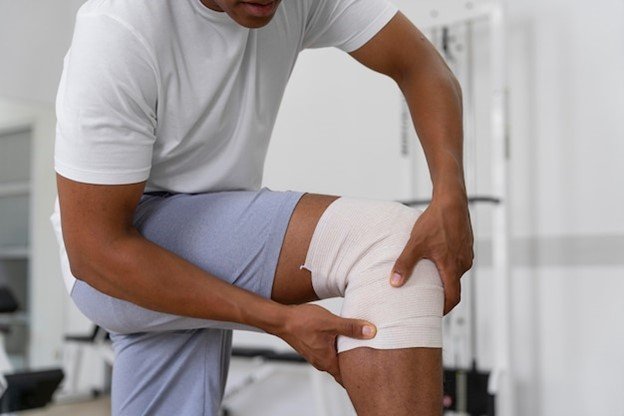 Have you ever heard of chronic childhood arthritis, also known as juvenile idiopathic arthritis (JIA)?
Have you ever heard of chronic childhood arthritis, also known as juvenile idiopathic arthritis (JIA)?
It is a type of arthritis that affects children under 16 years. According to the American College of Rheumatology, JIA affects about 1 in 1000 children, making it one of the most common chronic childhood diseases.
There are several subtypes of chronic childhood arthritis, each with its own symptoms and characteristics.
For example, oligoarticular JIA affects fewer than five joints in the body, while polyarticular JIA affects five or more joints. Systemic JIA can cause high fever, rash, and inflammation throughout the body.
Dr. Sandeep Singh, an acclaimed orthopedic doctor in Bhubaneswar, emphasizes the significance of early diagnosis and treatment to prevent or minimize joint damage, reduce pain and inflammation, and improve the overall quality of life.
Treatment options may include medication, physical therapy, and other forms of supportive care. With proper management, many children with chronic childhood arthritis can lead active and fulfilling lives.
Suppose you are searching for an experienced arthritis doctor in Bhubaneswar. You can consult Dr. Sandeep Singh, HOD of Sports Injury and Rehabilitation, at Care Super Specialty Hospital. He has extensive experience in treating chronic childhood arthritis.
For further information regarding symptoms, diagnosis, and treatment of chronic childhood arthritis, continue reading.
What are the symptoms of chronic childhood arthritis?
 Chronic childhood arthritis symptoms can vary depending on the type of arthritis a child has. However, some common symptoms may include the following:
Chronic childhood arthritis symptoms can vary depending on the type of arthritis a child has. However, some common symptoms may include the following:
- Joint pain
- Joint swelling and stiffness
- Limited range of motion
- Fever, swollen lymph nodes, and skin rash in systemic JIA
- Eye inflammation
- Slow growth, poor appetite
- Tiredness
Be aware that these symptoms can also be present in other conditions. Hence, getting a proper diagnosis from a doctor if your child is experiencing any of these symptoms is necessary.
What is the chronic childhood arthritis treatment cost in Bhubaneswar?
The cost of treating chronic childhood arthritis can vary depending on several factors. In Bhubaneswar, India, the cost of treatment can be influenced by the following factors:
Diagnostic tests: Your child will have to undergo several tests regularly, including blood tests, X-rays, and other imaging tests, to diagnose and manage the condition.
Medications: Doctors often prescribe drugs to manage the symptoms of chronic childhood arthritis, and the cost can vary depending on the type of medication, dosage, and duration of treatment.
Rehabilitation and physical therapy: Rehabilitation and physical therapy help children with chronic arthritis maintain joint function and mobility. The cost of these services can vary depending on the number of sessions required.
Surgery: In severe cases of JIA, surgery may be necessary to repair or replace damaged joints.
Insurance coverage: Insurance coverage can significantly affect the cost of chronic childhood arthritis treatment.
You can visit Dr. Sandeep Singh to understand the potential chronic childhood arthritis cost in Bhubaneswar.
How is chronic childhood arthritis diagnosed?

- Medical history
- Physical examination
- Blood tests
- Imaging tests, such as X-rays, ultrasounds, or MRIs
- Joint fluid analysis
You must seek medical attention as soon as possible if your child is experiencing joint pain, swelling, or stiffness. Early diagnosis and treatment can help manage symptoms and prevent joint damage.
What is the treatment for chronic childhood arthritis?
“The treatment for chronic childhood arthritis depends on several factors, including the type and severity of arthritis, the child’s age, and overall health,” says Dr. Sandeep Singh, a leading orthopedic surgeon in Bhubaneswar.
The treatment mainly involves a combination of the following:
Medications: Drugs are often prescribed to manage chronic childhood arthritis symptoms and reduce inflammation. These may include nonsteroidal anti-inflammatory drugs (NSAIDs), disease-modifying antirheumatic drugs (DMARDs), biologic response modifiers, and corticosteroids.
Physical therapy: Physical therapy can help children with arthritis maintain joint function and mobility. A physical therapist can develop a customized exercise program to help strengthen muscles, improve the range of motion, and reduce pain.
Occupational therapy: It assists children in managing daily activities and developing strategies to overcome the symptoms.
Splints or braces: They can be used to support affected joints and reduce pain and swelling.
Surgery: In severe cases of childhood arthritis, surgery may be necessary to repair or replace damaged joints.
Lifestyle changes: A healthy lifestyle, including a balanced diet and regular exercise, can help manage the symptoms and reduce the risk of complications.
It is crucial to work closely with a doctor specializing in treating chronic childhood arthritis, like Dr. Sandeep Singh, to develop a treatment plan tailored to your child’s specific needs.
With proper treatment, many children with this condition can manage their symptoms and maintain a good quality of life.
The life expectancy of children with chronic arthritis
Chronic childhood arthritis, or JIA, can affect children and impact their quality of life. However, most children can live a full and productive life with proper treatment.
The impact of JIA on life expectancy is relatively rare and depends on the severity of the condition and the presence of other health conditions.
Early diagnosis and treatment can improve the quality of life and potentially reduce the risk of long-term complications. With proper management, many children with chronic childhood arthritis can lead active, healthy lives and have a normal life expectancy.
If you have concerns about your child’s arthritis and its impact on their health and life expectancy, you can speak with a doctor who can provide personalized guidance and treatment options.
You can schedule an appointment with Dr. Sandeep Singh at National Orthopedic Centre, a dedicated orthopedic clinic in Bhubaneswar. He has more than eleven years of experience treating all types of arthritis and is an expert in joint replacement.
Discover the journey of recovery and the importance of post-operative care after total knee replacement from Dr. Sandeep Singh, often called the best orthopedic doctor in Bhubaneswar.
A total knee replacement (TKR) is typically recommended when non-surgical treatments no longer relieve knee pain and mobility limitations caused by osteoarthritis, rheumatoid arthritis, or knee injuries. You may consider TKR if you experience severe knee pain, stiffness, swelling, difficulty walking or climbing stairs, and a significant impact on your daily activities and quality of life.

Typically, 4 months after knee replacement surgery, you can expect significant improvements in mobility, reduced pain, and increased strength. After initially experiencing slow healing and a sense of time dragging, you will now find yourself feeling much better. You will likely be able to engage in light recreational activities and gradually resume daily tasks. Physical therapy may continue to enhance your range of motion and muscle function. However, occasional soreness, stiffness, and swelling may still occur after physical exertion.
Discover the journey of recovery and the importance of post-operative care after total knee replacement from Dr. Sandeep Singh, often called the best orthopedic doctor in Bhubaneswar.
Resuming normal activities 4 months after total knee Replacement
Most individuals can gradually resume normal activities 4 months after total knee replacement. Patients witness a significant decrease in knee pain with dedicated effort following the surgery. The bone-on-bone pain is no longer present; overall, they feel great. Soreness in the muscles, ligaments, and tendons surrounding the knee is common, as is minor swelling and sensations of heat.
Patients can expect increased leg strength and stability at 4 months after total knee replacement. Patients of orthopedic specialist Dr. Sandeep Singh have successfully participated in activities like golf, beach walks, and swimming.
“My patients have said such activities were unthinkable before their surgery,” says Dr. Singh. “Hiking, in particular, was a significant accomplishment, with no unusual knee pain experienced despite the expected body soreness.”
“However, it is important to follow the post-op guidelines and continue with rehabilitation exercises,” advises Dr. Singh. “This will ensure proper healing and regaining of strength, and you can gradually build your activity level without putting excessive strain on your knee.”
Dr. Singh is a renowned knee replacement doctor in Bhubaneswar with expertise in the latest surgical techniques, including robotic knee replacement surgery.
Post-operative care to follow
After full knee replacement, it is essential to follow these post-operative care guidelines:
- Attend physical therapy sessions to regain strength, improve range of motion, and promote proper healing.
- Take pain medications as directed and adhere to any other medicines your surgeon prescribes, such as blood thinners, to prevent complications.
- Keep the incision clean and dry, and follow instructions provided by your surgeon for dressing changes and wound care.
- Initially, use assistive devices like crutches or walkers and transition to walking aids as advised. Gradually increase activity level as guided.
- Perform recommended exercises to strengthen the muscles around your knee, improve stability, and promote overall recovery.
- Manage pain with ice packs, elevation, and over-the-counter pain relievers, as your healthcare team advises.
- Make necessary modifications to your daily routine, such as using proper body mechanics, avoiding excessive weight-bearing activities, and maintaining a healthy weight.
Attend all scheduled follow-up appointments with your surgeon to monitor your progress and address any concerns or complications.
Always consult a highly-skilled orthopedic surgeon like Dr. Sandeep Singh for personalized post-operative care instructions based on your specific condition and surgical approach.
Best exercises 4 months after total knee replacement
The best exercises for knee pain 4 months after knee replacement depends on individual circumstances and the guidance of your healthcare team.
Common exercises during this stage often include:
Quadriceps Strengthening:
Straight leg raises, quad sets, and squats with proper form can help strengthen the quadriceps muscles.
Hamstring Strengthening:
Hamstring curls using resistance bands or a leg curl machine can target the hamstring muscles.
Range of Motion Exercises:
Continuous focus on improving and maintaining knee range of motion through activities like heel slides, wall slides, and gentle stretches.

Stationary Biking:
Using a stationary bike with appropriate seat height and resistance can help improve knee mobility and strength.
Walking:
Gradually increasing walking distance and pace can enhance overall mobility and endurance.
“A combination of physical therapy exercises, stationary and regular cycling, and the use of a massaging product before and after workouts can help promote your overall healing process,” says orthopedic expert Dr. Sandeep Singh. “At the same time, you must avoid certain activities that can impact the healing process.”
Things to avoid after knee replacement
- High-impact activities such as running, jumping, or participating in contact sports
- Excessive twisting or pivoting movements that can strain the replaced knee joint
- Deep knee bends or squatting beyond the recommended range of motion
- Activities that put excessive stress on the knee joint, such as heavy lifting or carrying heavy loads
- Excessive weight gain as it can place additional strain on the knee joint
- Prolonged periods of standing or walking on hard surfaces without taking breaks
- Neglecting to follow the prescribed rehabilitation exercises and physical therapy program
- Ignoring signs of discomfort, pain, or swelling and not seeking medical attention when necessary
- Abruptly stopping any pain medication or other prescribed medications without consulting the healthcare team
- Smoking as it can impede the healing process and increase the risk of complications
- Ignoring post-operative care instructions and guidelines provided by the healthcare team
Conclusion
Reaching the 4-month mark after total knee replacement (TKR) is a significant milestone on the road to recovery. Patients can look forward to a return to their pre-surgery activities, free from the pain that once plagued them. However, it is crucial to recognize that the journey doesn’t end here. The importance of continuing with physical therapy workouts cannot be overstated.
Consider incorporating activities like swimming, cycling, or dancing into your routine to make your recovery enjoyable. Managing swelling through elevation and ice, and considering regular massages, can provide additional relief. By strengthening the muscles, tendons, and ligaments surrounding the knee, you reduce pressure on the joint and pave the way for a successful and fulfilling recovery.
“The key lies in your dedication and perseverance as you work towards regaining your mobility and embracing a pain-free life once again,” says Dr. Sandeep Singh, the go-to knee replacement doctor in Bhubaneswar.
If you or a loved one has concerns about pain or discomfort 4 months post total knee replacement, please visit Dr. Sandeep Singh for reliable treatment options.
Dr. Singh has over 11 years of experience providing solutions to people with fractures, sports injuries, and other orthopedic conditions.


